How and When to Harvest Delicata Squash
Did you grow delicata squash this past summer? Are the gourds finally starting to look ripe on the vines? You may be wondering exactly how and when to harvest delicata. This winter variety is a bit unusual looking. It’s not as simple as harvesting an orange pumpkin. Plant biologist Emily Estep will tell you everything you need to know about this colorful fruit, including how and when to harvest delicata squash.

Contents
Delicata squash is a type of winter squash with delicate skin, hence its name. Even though it’s left to mature on the vine for months, it doesn’t develop a super thick rind, making it easy to roast and add to autumnal meals.
These gourds are usually anywhere from about five inches to one foot long. They have a rounded, cylindrical shape, with cream-colored flesh that often has green vertical stripes. At first glance, you may mistake this colorful fruit for a decorative squash.
If you’re growing delicata for the first time, you may be wondering about exactly when and exactly how you harvest the squash. Fortunately, it’s not too complicated once you understand some basic information about how long it takes this variety to grow and what indicates maturity.
We will walk you through all the steps of how and when to harvest delicata squash, from foundational knowledge about how the fruits grow, when to harvest them, and how to cure and store them properly. You’ll even discover some tips on how to eat this fall treat.
Let The Squash Develop
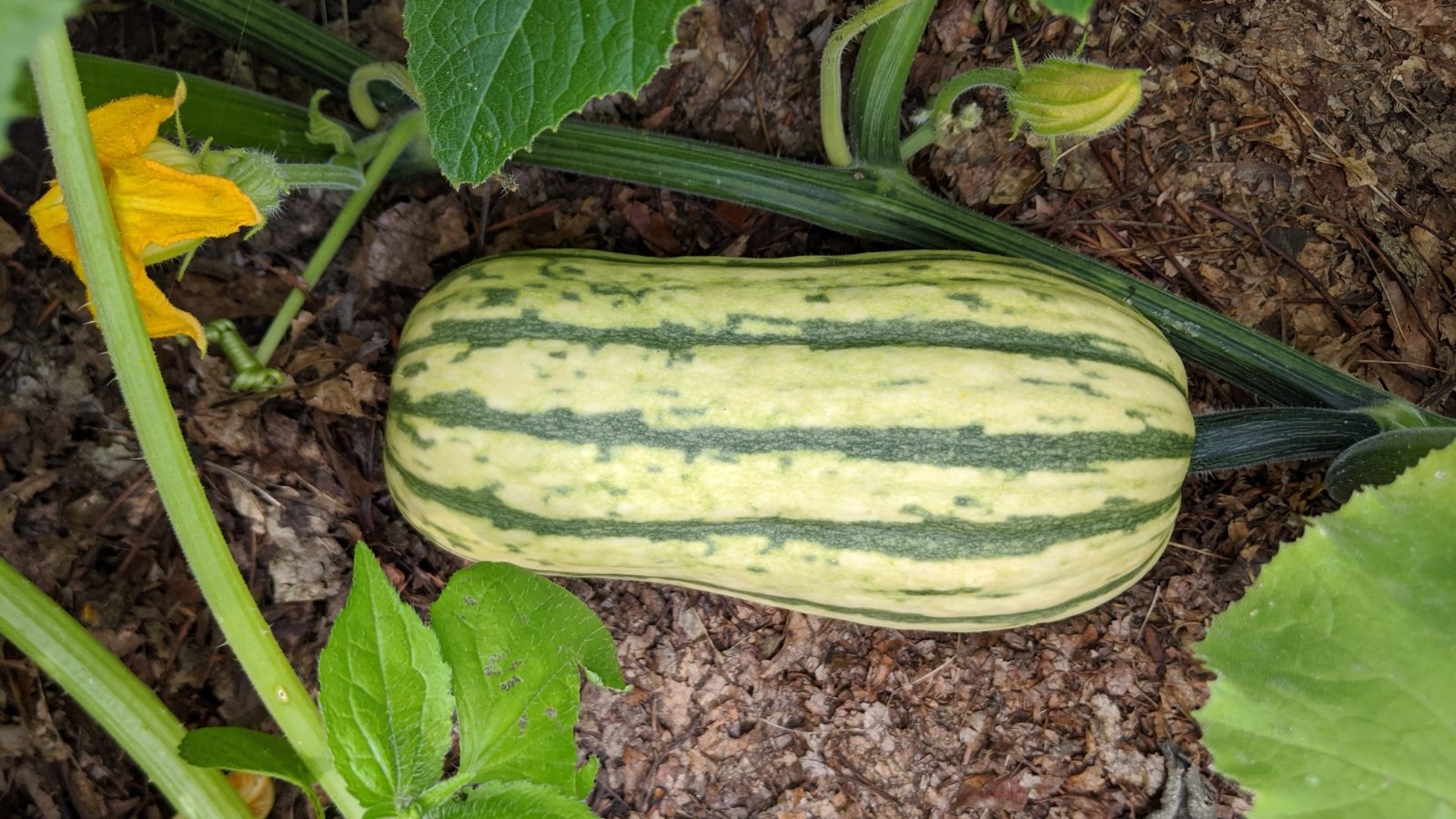
If you’re new to growing delicata squash, it’s important to start with a foundational understanding of the classifications “summer squash” and “winter squash.” Traditionally, “summer” refers to varieties that you harvest when they are young and tender, before any seeds have developed, like zucchini. They have a shorter shelf life, so you have to eat them shortly after harvest.
“Winter,” on the other hand, refers to varieties that mature on the vine for months, developing not only viable seeds but also thick rinds. Classic examples of winter squash include pumpkin and butternut. These gourds have long shelf lives when kept in a cool, dry place, like a cellar.
Species does not indicate whether a variety is a summer or winter type. Delicata is a variety of Cucurbita pepo, which includes examples of both categories, such as zucchini and pumpkins. Don’t let this confuse you. Delicata is a winter variety.
These gourds remain on the vine until ripe, usually for months. Harvesting them when young and small, like a patty pan squash, is a mistake. When planting, anticipate that it will probably be around 90 days before you get to enjoy the fruits of your labor.
Let this winter squash develop on the vine for optimal flavor and texture.
Estimate The Right Window of Time

After a long season of patiently waiting, and especially considering how busy the garden can get during autumn, you may forget to start inspecting your plants during primetime harvest season. You can easily avoid this with a little bit of planning.
Usually, seed packets and seed catalogs will give you a “days to maturity” number, which is when you can expect your harvest to be ready after starting from seed. If you can’t find the number or lose your packet, know that most cultivars reach maturity in about three months.
The ‘Honey Boat’ variety reaches maturity in about 90 days, while other cultivars, such as ‘Sweet Dumpling,’ need about 100 days. When your seeds germinate in spring, count three months forward on your calendar and make a note. This will remind you to check the maturity of your growing gourds.
Another way to track the potential ideal harvest time is to count the days after fruit set. “Fruit set” refers to the time in which flowers begin to transition into fruit. Typically, delicata are ready to harvest about 50-55 days after fruit set.
Once the harvesting time frame approaches, either about three months from germination or 50-55 days from fruit set, you should keep a close eye on your plants. They could be ready any day now.
Inspect For Color, Texture, and Vine Maturity
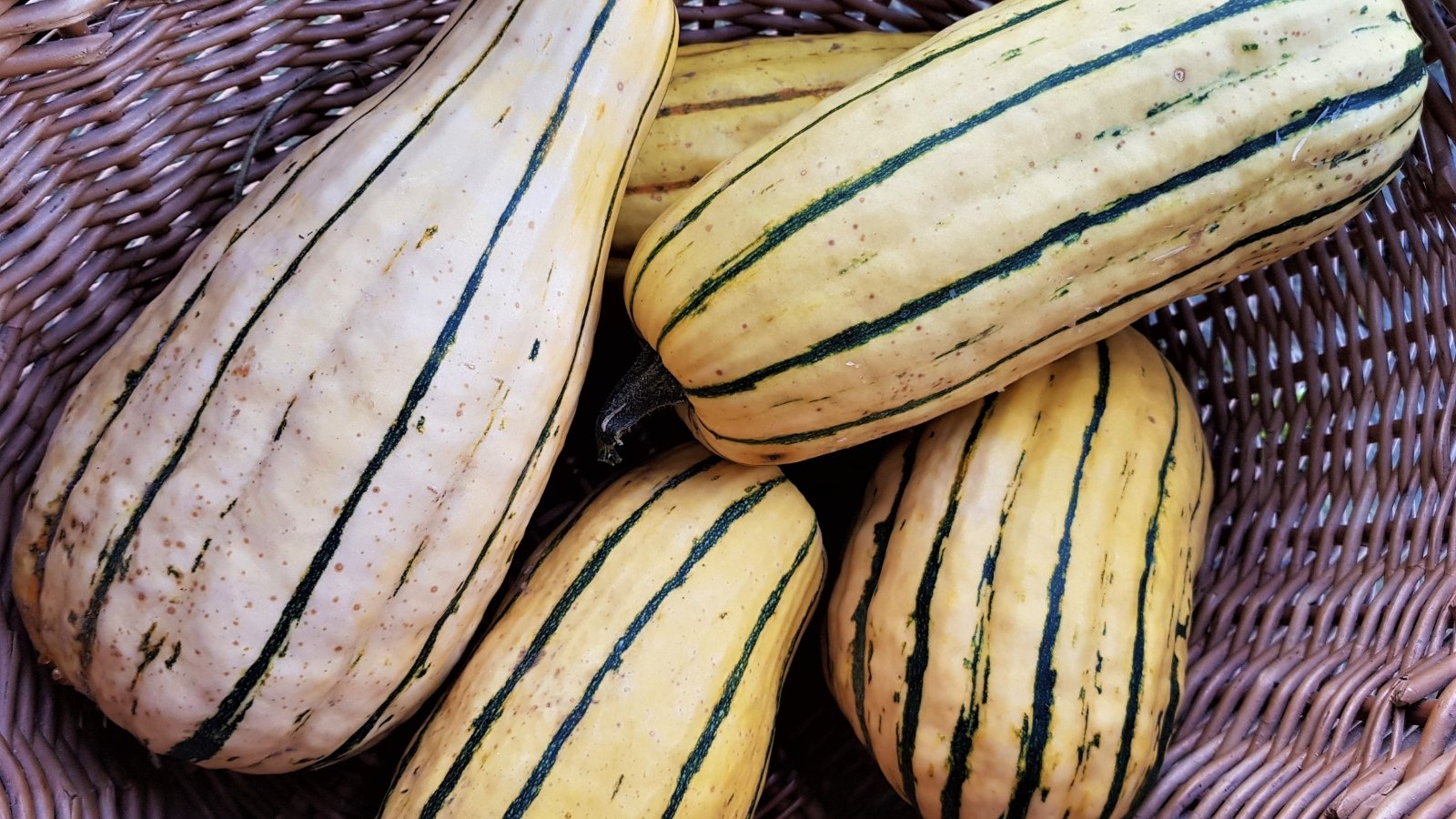
Okay, so now you know when to start rummaging your way through the foliage, looking for harvestable fruit. There are a few signs that indicate a delicata is ready for you to pluck it from the vine, including rind color, rind texture, and the maturity of the vines themselves.
Though there is some slight variation between cultivars, delicata are generally cream-colored, with a slightly orange hue. They often have green vertical stripes.
When the fruits first emerge, they will be light green. The light shade of green slowly transitions into the cream shade. This is what you’re looking for, whether or not there are stripes. If they are still light green, then they are not ready to harvest, regardless of size.
Next, you want to confirm that the texture is correct. This variety has a more delicate rind than most but should still be quite firm. The classic “fingernail test” works well here. If you push your fingernail into the rind, it shouldn’t go right in. The rind should be firm, making it difficult to leave a serious dent.
Finally, a tell-tale sign that your winter squash is ready to harvest is that the actual vines will be on their last leg. The vines will be starting to get brown and dry. The small piece of stem connecting the vine to the fruit will be brown and hard.
Remove Cleanly
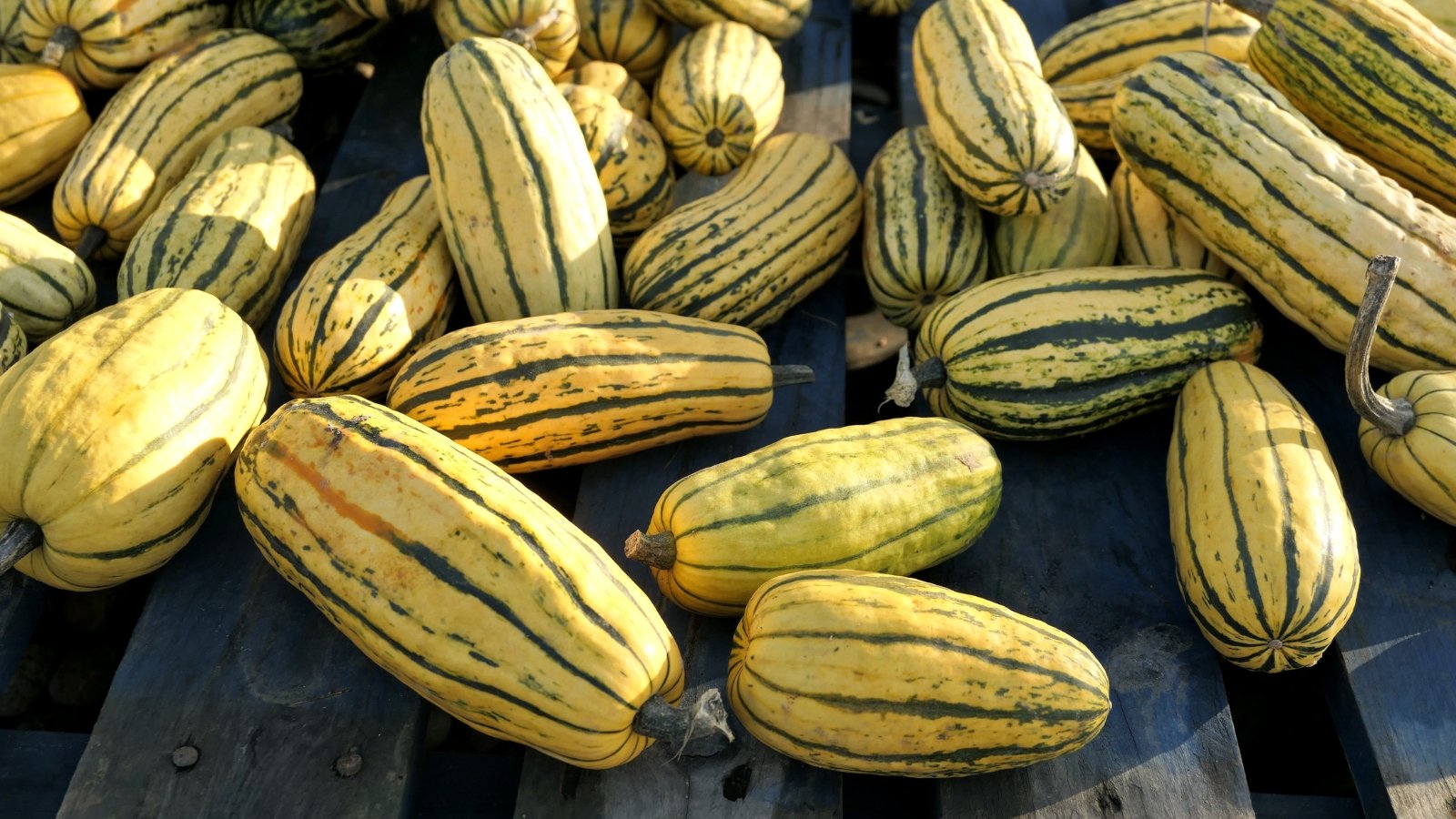
At this point, you should be pretty clear on exactly when to harvest, but the method of removal is just as important. You want to use clean, sharp pruners or another equally sharp tool. If you use a blunt tool (or, even worse, rip it off with your hands), you risk significant damage to the plant.
Sometimes, when you pull the fruit off by hand, you also end up ripping off the piece of the stem connected to the fruit, tearing the flesh. This will reduce the gourd’s shelf life significantly. If this happens, aim to eat the delicata within a few days.
Another critically important point here is to use a tool that’s clean and disinfected. You do not want to spread plant pathogens from one plant to another. If you’re using the same pruners to gather peppers, winter squash, and fresh flowers all in the same day, you may be manually spreading disease throughout your garden.
C. pepo can potentially struggle with many fungal diseases, including anthracnose, fusarium wilt, and powdery mildew, in addition to bacterial disease such as bacterial wilt of cucurbits. Cucumber beetles, squash bugs, and vine borers also find their way to these plants.
Sanitize your tools between usage to avoid these pitfalls.
Return For More
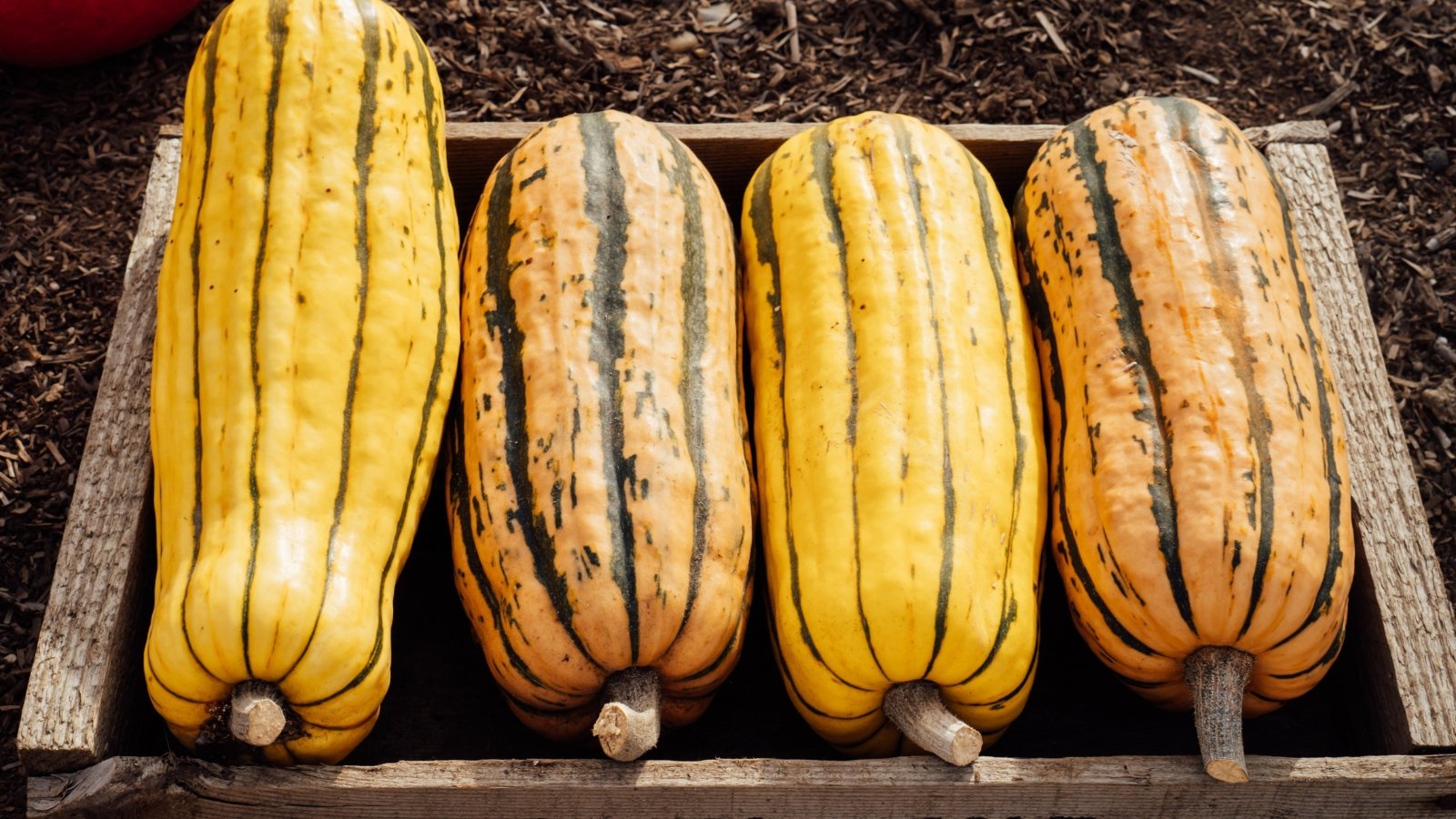
Once you’ve started harvesting, don’t forget to keep coming back for more. The plants often produce continuous fruit until winter temperatures really set in. If you have more on the vine, you’ll want to make sure you go back to get each one as they’re ready.
Additionally, harvesting these mature fruits may encourage the plant to produce even more, similar to the process of deadheading flowers. Once you’ve removed the mature fruit (with developed seeds), the plant will do its best to put out even more. It’s a biological instinct.
This also means that if you leave ripe fruits on the vine unpicked, the plant may not produce more. As far as the plant is concerned, it has already created viable seeds and done its job.
This phenomenon is partially why gardeners often end up with a massive amount of zucchini. In removing the fruit, you force the plant to try and make seeds again and again. You probably won’t get the same prolific volume of delicata since this variety isn’t harvested as early as zucchini, but the principle still stands.
If you want to maximize your harvest, keep returning for more. Make it part of your fall garden routine.
Cure Thoroughly
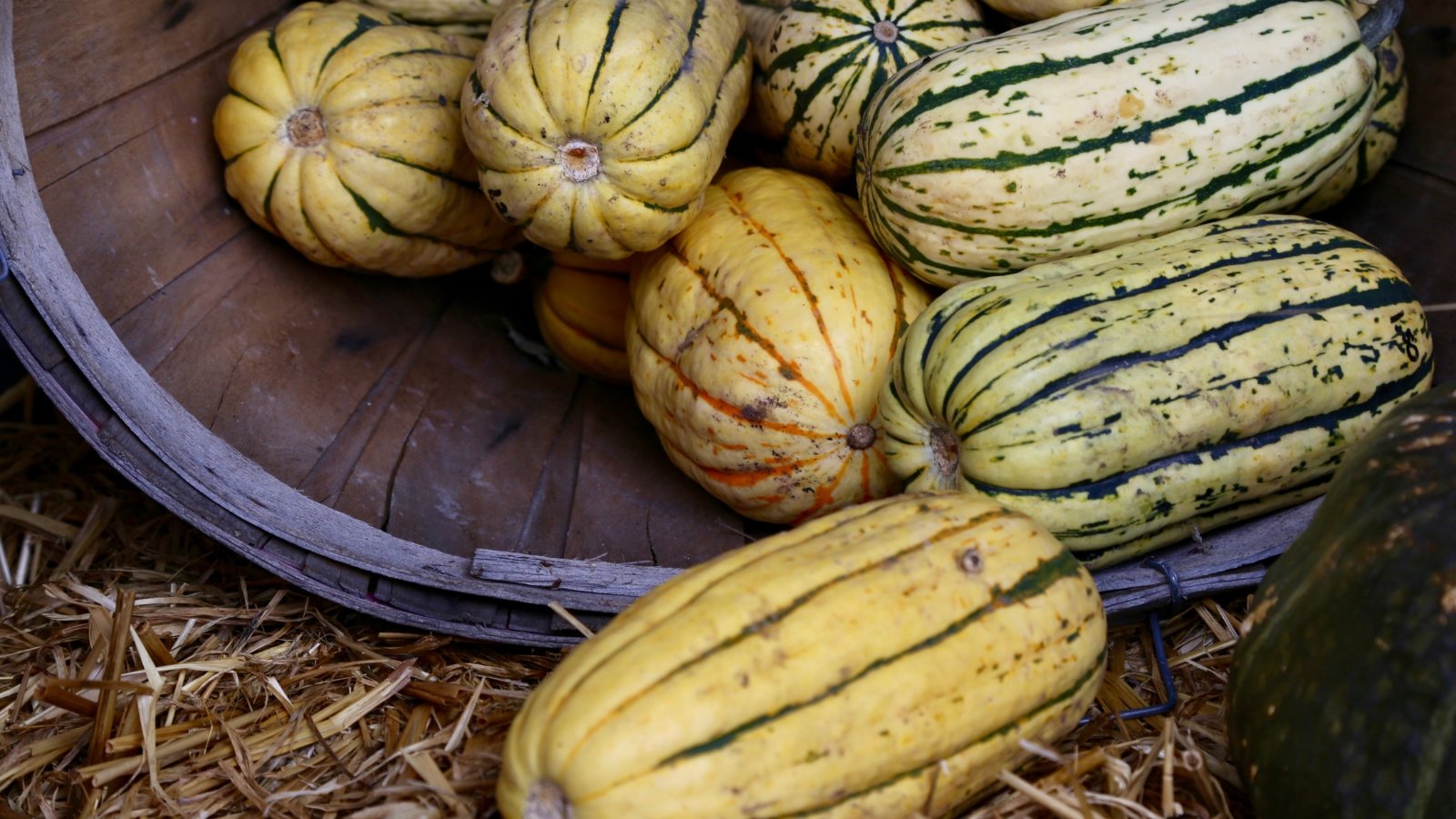
Curing refers to the process of further hardening the rinds, which significantly improves its shelf life. This is an important step and is different from regular storage. You’ve put a lot of effort into your delicata and likely want to enjoy them for as long as possible. If so, don’t skip curing.
If the weather happens to be just right, you can actually cure your squash outside in the garden just after harvesting. All you do is leave them exactly where they were, severed from the plant, for about one week. You can do this if temperatures are in the 70-80°F range (21-27°C) and if it’s mostly dry outside.
If conditions aren’t ideal, you’ll have to find another spot to cure. A greenhouse would be the best case scenario. Without access to a greenhouse, a warm, sunny window will work. You want to keep the squash dry and warm, preferably a bit above average room temperature.
Store Properly
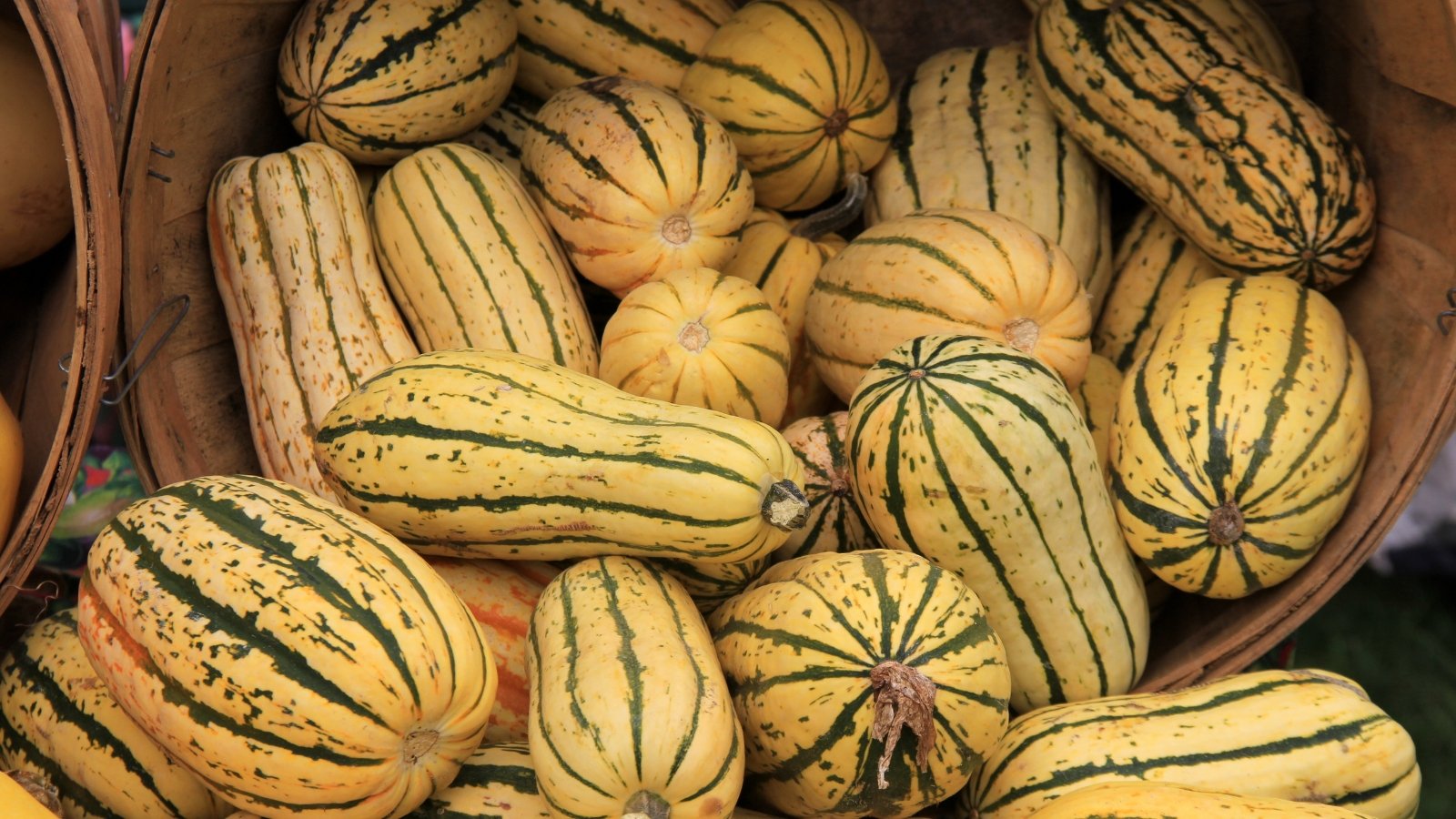
Once your delicata is harvested and cured, your final step is to make sure you’re storing it properly. These gourds can last for up to six months in a cool, dry place. You can bake, roast, and saute fresh squash all winter long.
The perfect temperature is between 50 and 55°F (10-13°C). For many gardeners, this is a garage, basement, or shed. However, be careful about moisture and seasonal changes. Basements often have high humidity, and garages can get hot on unexpectedly warm fall days.
Good ventilation is also key. Squash can rot quickly if piled up in a corner. Space them out evenly and make sure each one is making minimal contact with surfaces around it.
Additionally, keep your harvest away from other fruit, which can speed up the process of decay. Apples, peppers, pears, and tomatoes shouldn’t be kept anywhere near squash—unless you have them on the kitchen counter because you’re about to make a meal.
Lastly, even if you don’t have a spot that’s cool and dry enough for delicata, do not put them in the refrigerator. This can damage their texture. You can, however, freeze them. Try cutting them into cubes, freezing them on a tray, and then popping the frozen cubes back into the freezer in an air-tight container.
Bonus: How to Prepare
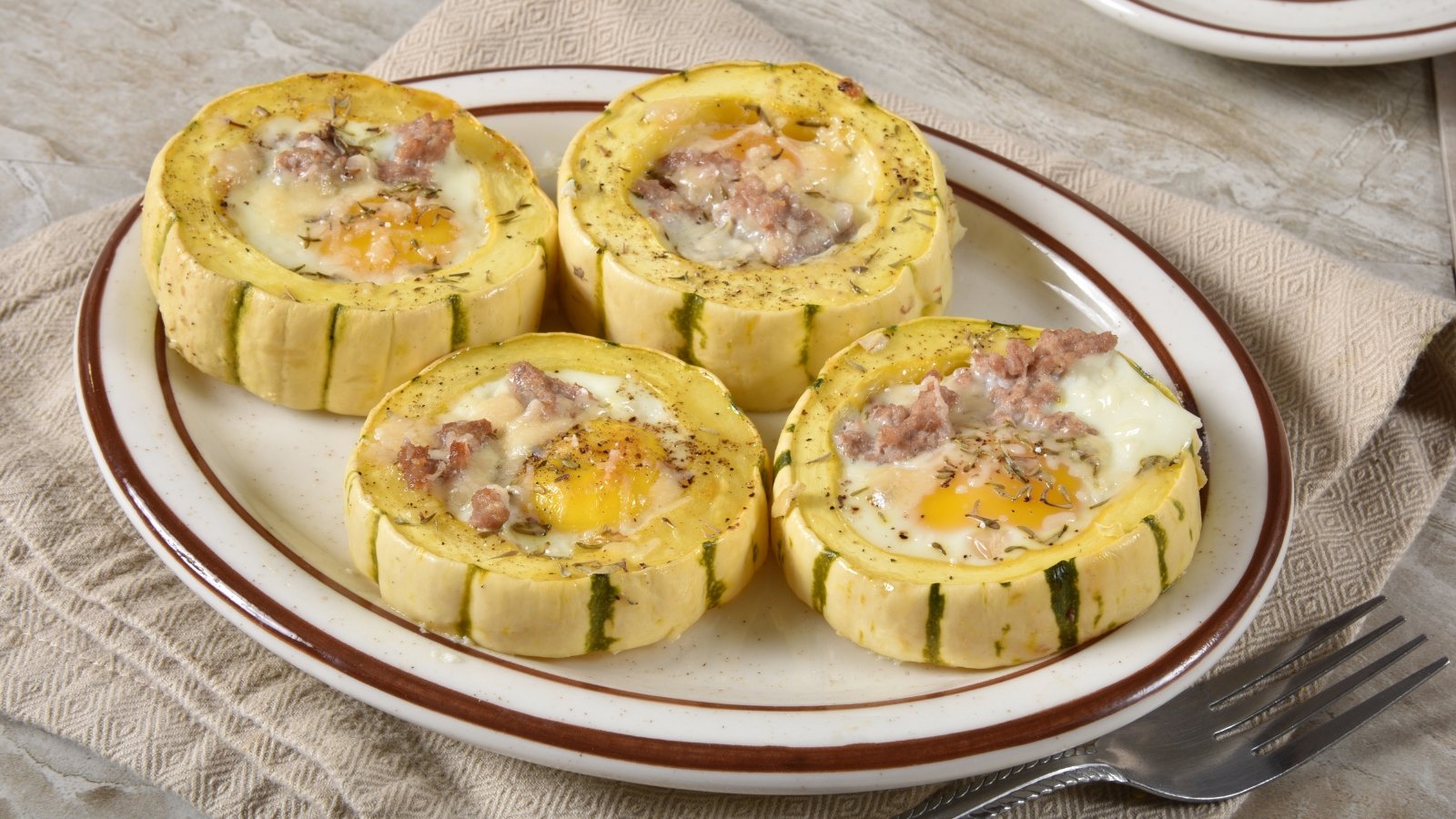
Since delicata have such a long shelf life, you’ll have all winter to explore with recipes and ideas. The delicate rinds are edible, making prep super easy.
Delicata is often roasted, just like butternut, accompanying meats in hearty dishes. You can also cut it up and bake it for a super quick side dish. You can use it interchangeably with both butternut and pumpkin.
You can also stuff delicata by scooping out the insides and filling it with meat, herbs, grains, and nuts. Really, it’s a great way to use up anything you have in the fridge. Chunks of baked delicata make a hearty meat substitute in tacos, and you can even make noodles out of the flesh, just like “zoodles.”
If you’re a big fan of roasting pumpkin seeds after you’ve carved jack-o-lanterns, try roasted delicata seeds. There are countless ways to prepare and enjoy this colorful winter squash.










